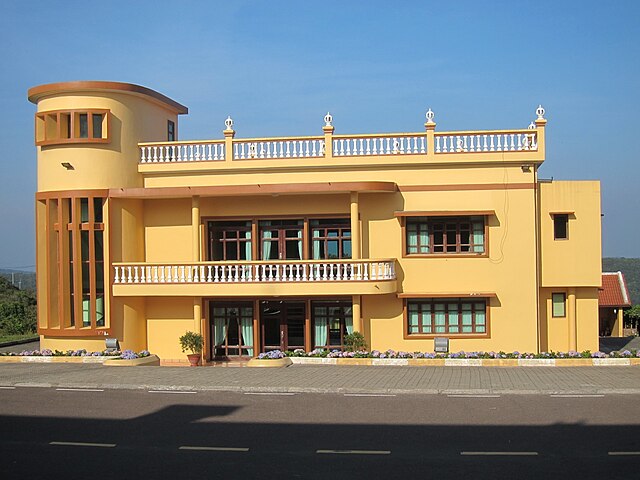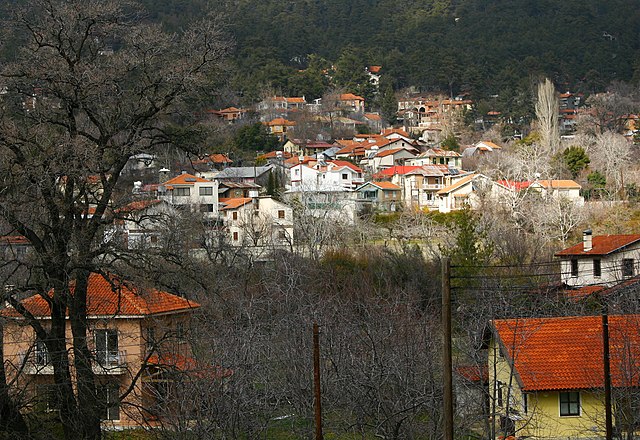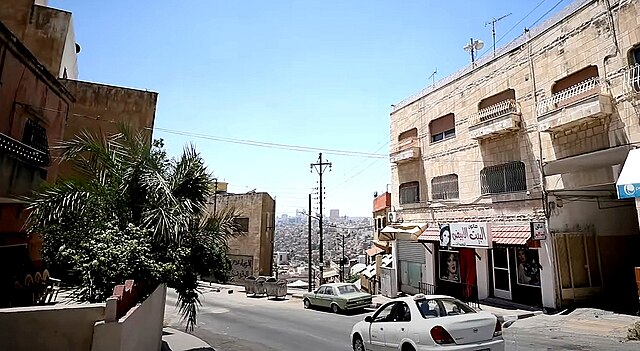Loading AI tools
Town located at a higher elevation than the nearby plain or valley From Wikipedia, the free encyclopedia
A hill station is a town located at a higher elevation than the nearby plain or valley. The English term was originally used mostly in colonial Asia, but also in Africa (albeit rarely), for towns founded by European colonialists as refuges from the summer heat and, as Dale Kennedy observes about the Indian context, "the hill station (...) was seen as an exclusive British preserve: here it was possible to render the Indian into an outsider".[1][2] The term is still used in present day, particularly in India, which has the largest number of hill stations, most are situated at an altitude of approximately 1,000 to 2,500 metres (3,300 to 8,200 ft).

Nandi Hills is a 11th-century hill station that was developed by the Ganga dynasty in present-day Karnataka, India.[3][4] Tipu Sultan (1751–1799) notably used it as a summer retreat.[5]
Hill stations in British India were established for a variety of reasons. One of the first reasons in the early 1800s, was for the place to act as a sanitorium for the ailing family members of British officials.[6] After the rebellion of 1857, the British "sought further distance from what they saw as a disease-ridden land by [escaping] to the Himalayas in the north". Other factors included anxieties about the dangers of life in India, among them "fear of degeneration brought on by too long residence in a debilitating land". The hill stations were meant to reproduce the home country, illustrated in Lord Lytton's statement about Ootacamund in the 1870s as having "such beautiful English rain, such delicious English mud."[7] Shimla was officially made the "summer capital of India" in the 1860s and hill stations "served as vital centres of political and military power, especially after the 1857 revolt."[8][9]
As noted by Indian historian Vinay Lal, hill stations in India also served "as spaces for the colonial structuring of a segregational and ontological divide between Indians and Europeans, and as institutional sites of imperial power."[10][11][12][13][14][15][16] [17][18][excessive citations] William Dalrymple wrote that "The viceroy was the spider at the heart of Simla's web: From his chambers in Viceregal Lodge, he pulled the strings of an empire that stretched from Rangoon in the east to Aden in the west."[19] Meanwhile Judith T Kenny observed that "the hill station as a landscape type tied to nineteenth-century discourses of imperialism and climate. Both discourses serve as evidence of a belief in racial difference and, thereby, the imperial hill station reflected and reinforced a framework of meaning that influenced European views of the non-western world in general."[20] The historian of Himalayan cultures Shekhar Pathak speaking about the development of Hill Stations like Mussoorie noted that "the needs of this (European) elite created colonies in Dehradun of Indians to cater to them."[21] This "exclusive, clean, and secure social space – known as an enclave – for white Europeans ... evolved to become the seats of government and foci of elite social activity", and created racial distinctions which perpetuated British colonial power and oppression as Nandini Bhattacharya notes.[22][23] Dale Kennedy observed that "the hill station, then, was seen as an exclusive British preserve: here it was possible to render the Indian into an outsider".[1]
Kennedy, following Monika Bührlein, identifies three stages in the evolution of hill stations in India: high refuge, high refuge to hill station, and hill station to town. The first settlements started in the 1820s, primarily as sanitoria. In the 1840s and 1850s, there was a wave of new hill stations, with the main impetus being "places to rest and recuperate from the arduous life on the plains". In the second half of the 19th century, there was a period of consolidation with few new hill stations. In the final phase, "hill stations reached their zenith in the late nineteenth century. The political importance of the official stations was underscored by the inauguration of large and costly public-building projects."[8]: 14
The concept of Hill Station has been used loosely in India (and more broadly South Asia) since the mid-20th century to qualify any town or settlement in mountainous areas, which attempt to expand its local economy toward tourism, or have been invested by recent mass tourism practices. Kullu and Manali in the Indian state of Himachal Pradesh, are two example of that misuse of Hill Station or more accurately deviation of its meaning. These two historical settlements existed prior to the British, and haven't been specially frequented by them or even extensively modified or shaped by them. However, the rise of internal domestic tourism in India from the eighties and the subsequent reproduction of Hill Station practice by urban middle-class Indians contributed to the labelling of these two localities as Hill Stations. Munnar, a settlement in the state of Kerala whose economy is primarily based on tea cultivation and processing, as well as plantation agriculture, is another example of a hill town transformed by contemporaneous tourism practices as a hill station.
Most hill stations, listed by region:


[clarification needed][citation needed]



Hundreds of hill stations are located in India. The most popular hill stations in India include:










Khyber Pakhtunkhwa
Punjab
Sindh
Balochistan
Gilgit Baltistan






Seamless Wikipedia browsing. On steroids.
Every time you click a link to Wikipedia, Wiktionary or Wikiquote in your browser's search results, it will show the modern Wikiwand interface.
Wikiwand extension is a five stars, simple, with minimum permission required to keep your browsing private, safe and transparent.